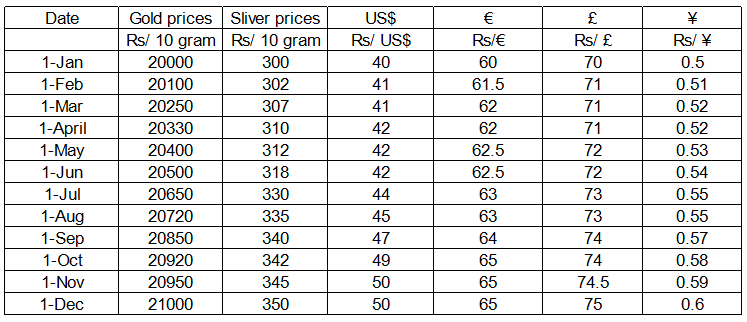1. I. Japan is investing in strengthening bonds with ASEAN countries and Japanese countries recently won a $ 370 million contract to start .......... a new underground railway system in Jakarta. II. The cost of ......... space vehicles is high no doubt, but the costs of complying with legal and regulatory paperwork and rules is huge too.
Show Similar Question And Answers
 Interest rates on US, EU, UK and Japanese bonds are 10%, 20%, 15% and 5% respectively.Mr. Sanyal invested his entire fund in gold, US bonds and EU bonds in January 2010. He liquefied his assets on 31st August 2010 and gained 13% on his investments. If instead he had held his assets for an additional month he would have gained l6.25%. Which of the following options is correct?
Interest rates on US, EU, UK and Japanese bonds are 10%, 20%, 15% and 5% respectively.Mr. Sanyal invested his entire fund in gold, US bonds and EU bonds in January 2010. He liquefied his assets on 31st August 2010 and gained 13% on his investments. If instead he had held his assets for an additional month he would have gained l6.25%. Which of the following options is correct? Powered By:Omega Web Solutions
Powered By:Omega Web Solutions